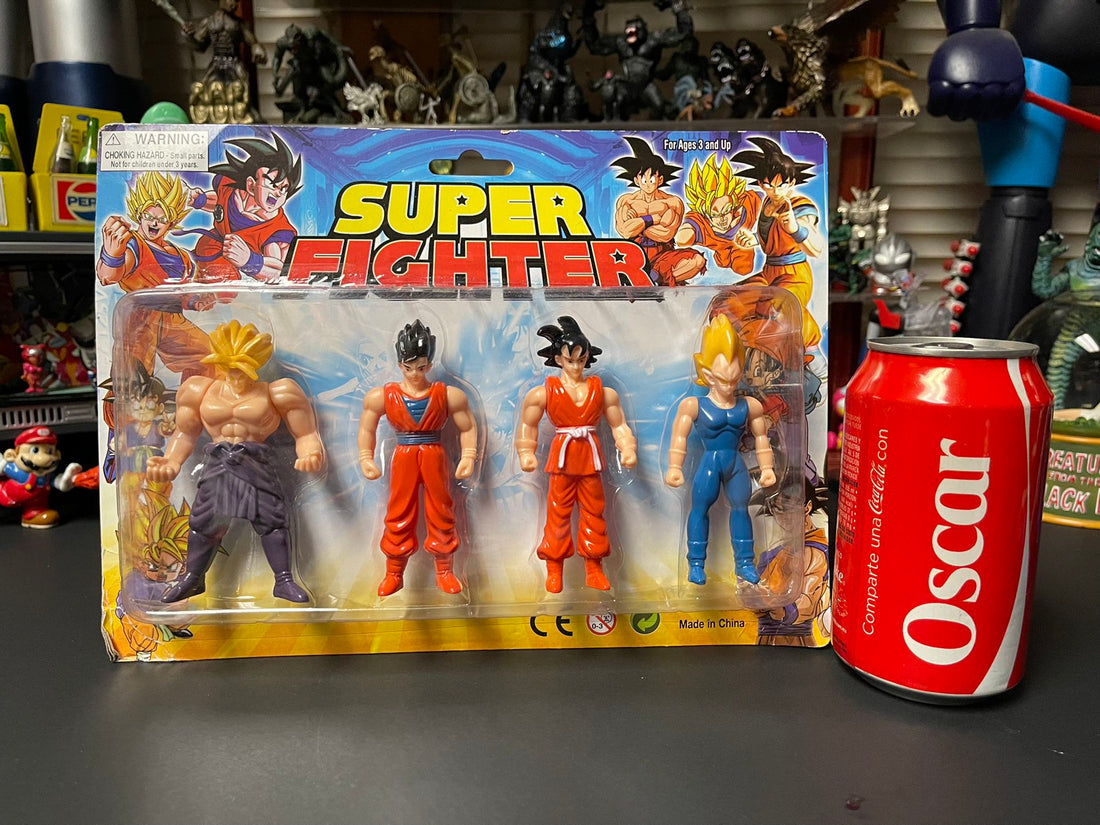
What are Bootlegs?
Share
Bootleg figures, also known as knock-offs are unlicensed copies of famous pop-culture toys or collectibles made by individuals or small companies from existing molds or created on their own. The toys can be from TV shows, Anime, Movies, or any urban digital media.
A brief history: Most popular bootlegs were made in the 70s and 80s of toys like G.I.Joe and Star Wars. Poorly made with low-quality materials and bad paint jobs (not like the originals were that well off.) Yet, they were extremely popular among kids and adults at that time who couldn't afford the more expensive figures, or were not that die-hard fans of the franchise.
The Bootlegs trend has been on a rise in recent times in India as people (read casual collectors) move more and more towards the cheaper options being made available to them. It has also become more sophisticated than before as people or companies use advanced 3D printing techniques to create high-quality figures. In the end, it still stands out because of poor paint jobs. Higher quality and more expensive bootlegs are often harder to distinguish from the originals (for people who do not really care about the figures or casual collectors.)
People generally question the safety and quality of the bootlegs, and a general answer to both - they're bad. Materials used are generally of inferior quality. If you find a figure that's highly valued but is available for cheap, it's a bootleg. One of the key features of a bootleg figure is that they do not look anything like the actual figures they're based on. (Excluding the custom figures, in the end, it all depends on the painting skills of the figure creator.)
The market is flooded with bootlegs that look very close to the originals, however, seasoned collectors are still able to spot the differences. The easiest way to spot a bootleg is to check for the differences in paint, the texture of the figure (if it's glossy or matte), if it seems like the figure is able to see in both directions at the same time, or if the hair looks unnatural (w.r.t. figures.) It is also important to know that in some cases, the bootlegs melt with the rise in temperature (which may not be true for high-quality studio figures.)
It may be appealing to the collector to have a figure in their collection not caring about the authenticity, however, this does affect the market as if the manufacturers do not reach the expected sales or profits target, they may discontinue the manufacturing for the figure or the complete line. The industry and the individuals are affected by the sales and purchase of such bootlegs. It's important to support the originals and keep the industry growing (and to avoid ugly-looking figures being a part of your collection.)
A brief history: Most popular bootlegs were made in the 70s and 80s of toys like G.I.Joe and Star Wars. Poorly made with low-quality materials and bad paint jobs (not like the originals were that well off.) Yet, they were extremely popular among kids and adults at that time who couldn't afford the more expensive figures, or were not that die-hard fans of the franchise.
The Bootlegs trend has been on a rise in recent times in India as people (read casual collectors) move more and more towards the cheaper options being made available to them. It has also become more sophisticated than before as people or companies use advanced 3D printing techniques to create high-quality figures. In the end, it still stands out because of poor paint jobs. Higher quality and more expensive bootlegs are often harder to distinguish from the originals (for people who do not really care about the figures or casual collectors.)
People generally question the safety and quality of the bootlegs, and a general answer to both - they're bad. Materials used are generally of inferior quality. If you find a figure that's highly valued but is available for cheap, it's a bootleg. One of the key features of a bootleg figure is that they do not look anything like the actual figures they're based on. (Excluding the custom figures, in the end, it all depends on the painting skills of the figure creator.)
The market is flooded with bootlegs that look very close to the originals, however, seasoned collectors are still able to spot the differences. The easiest way to spot a bootleg is to check for the differences in paint, the texture of the figure (if it's glossy or matte), if it seems like the figure is able to see in both directions at the same time, or if the hair looks unnatural (w.r.t. figures.) It is also important to know that in some cases, the bootlegs melt with the rise in temperature (which may not be true for high-quality studio figures.)
It may be appealing to the collector to have a figure in their collection not caring about the authenticity, however, this does affect the market as if the manufacturers do not reach the expected sales or profits target, they may discontinue the manufacturing for the figure or the complete line. The industry and the individuals are affected by the sales and purchase of such bootlegs. It's important to support the originals and keep the industry growing (and to avoid ugly-looking figures being a part of your collection.)
